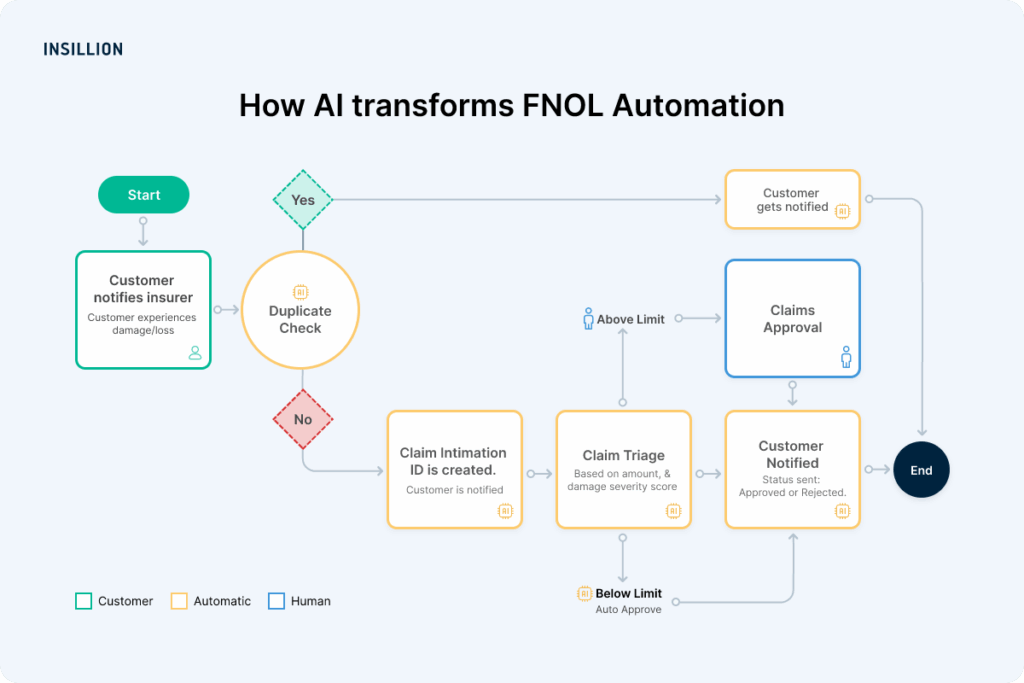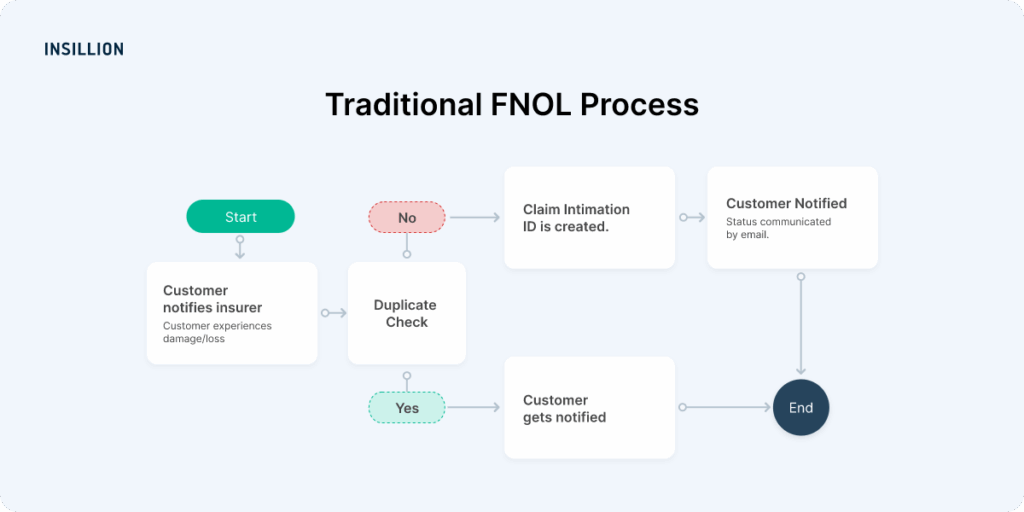Table of Contents
AI in Insurance Workflow Automation
Life before AI was characterized by human labor, manual processes, outdated software platforms, and limited technical skills. But now in today’s digital world, automation is changing industries. AI ranked consistently as the top game-changing technology in Gartner’s CIO surveys over the last three years (2019 to 2021). Insurance is already known for its complex process, so the introduction of AI has greatly helped the insurance industry, especially in fields like submission and claim processing. One key area of transformation is First Notice of Loss (FNOL), which is the initial stage in claim processing.
In this article, let's learn more about AI in claims, before and after AI automation, and get to know the best automation solution that's revolutionizing the insurance industry these days.
Understanding FNOL (First Notice of Loss)
The term "first notice of loss" refers to the first notification that an insurance carrier gets from a policyholder about a claimable event. This includes situations such as accidents, property damage, and many more. The FNOL process is critical in ensuring an effective claims workflow. When the notice is received, the carriers and MGAs immediately begin gathering information, evaluating coverage, and determining the next actions. Traditional FNOL processes frequently face many challenges due to the dependency on manual entry and human review.
- Lengthy processing times
- Human error
- Poor customer interaction
How AI Transforms FNOL Automation
Artificial intelligence is crucial in automation, especially in decision-making processes in FNOL. AI automates FNOL (First Notice of Loss) submissions, claim tracking, and customer inquiries, resulting in speedier responses. Intelligent Document Processing (IDP) automates data extraction from claim-related documents (policies, receipts, and images). This reduces the reliance on manual entry, accelerates data processing, and minimizes errors, leading to a more efficient FNOL process.
AI-powered predictive analytics can detect unusual patterns and anomalies in claims data, aiding in the identification of potentially fraudulent activities. So, AI ensures faster validation, reduced paperwork, and minimal human intervention, thereby enhancing accuracy and improving overall efficiency.

Technologies Powering FNOL Automation
AI-driven claims automation has significantly reduced the burden of manual work in the insurance industry.
- AI/LLM informs insurers' data-driven decision-making by calculating claim costs, risks, and settlement times.
- Machine Learning (ML) helps in data analysis.
- AI-powered predictive analytics detect fraud patterns.
- Robotic Process Automation (RPA) handles repetitive tasks
- IDP uses AI to extract documentation and images for analyzing damage to vehicles, properties, and many more, automatically validating claims for faster processing.
- Natural Language Processing (NLP) enables the interpretation of unstructured data, such as claim narratives.
Automation also notifies customers about their claim status. These technologies ensure accurate data capture and reduce errors, collectively contributing to automating and optimizing the FNOL process.
Challenges in traditional Claims FNOL process
Before automation, the First Notice of Loss (FNOL) process in insurance was manual, relying heavily on human intervention. According to a recent study, one-third of all policyholders were not completely satisfied with their most recent claims experience. This manual approach often results in prolonged processing times, increased operational costs, and a higher likelihood of errors, all of which result in negative customer satisfaction. Adjusters faced challenges in managing unstructured data from various sources, including handwritten reports and inconsistent formats. This made data extraction and analysis both time-consuming and prone to inaccuracies.

Benefits of Claims FNOL automation
Implementing AI Workflow Automation in insurance claims processing offers numerous benefits.
- Enhanced Efficiency and Productivity: By automating repetitive tasks, optimizing resource allocation, and improving the speed of FNOL claims processing, the software significantly reduces processing times and allows underwriters to focus on complex cases.
- Cost Reduction: Without integrated systems, claims agents must navigate multiple platforms to gather information, underscoring the importance of claims automation and the benefits of IDP and RPA in insurance claims.
- Scalability and Flexibility: Due to increasing claim volume, an AI-powered system ensures seamless scalability, performance, and flexibility to meet evolving business needs and regulatory requirements.
- Enhanced Customer Experiences: The automated claims process reduces processing times and provides insurers with quick decisions, while automated communications improve transparency and customer satisfaction.
- Error Reduction: AI-powered workflows minimize human errors in data processing and ensure adherence to TATs.
- Better Collaboration: Aligns claims adjusters, surveyors, and service providers for improved workflow
- Faster Claims Resolution: AI speeds up the execution and changes within the claims processing. This ability enables the organizations to respond rapidly to market developments and client requests.
- API Integration: Connects different insurance systems, enabling seamless data exchange across underwriting, claims processing, and customer service platforms.
Conclusion
In conclusion, AI-driven claims automation is revolutionizing the insurance industry, streamlining operations and enabling insurers to process claims faster with fewer errors, ensuring better efficiency and higher satisfaction. As the insurance industry embraces digital transformation, having the right automation solution is key to staying ahead.
Start Automating Your Workflows Today!
InFlow by Insillion, an AI-enabled process automation platform built specifically for the insurance industry. By integrating InFlow, insurance carriers and MGAs can automate claims FNOL workflows, reducing operational bottlenecks and improving efficiency. The result? Happier customers, streamlined operations, and significant cost savings.
Frequently Asked Questions
Articles
Recent Articles
Loading recent posts...
Stay updated on
what’s relevant